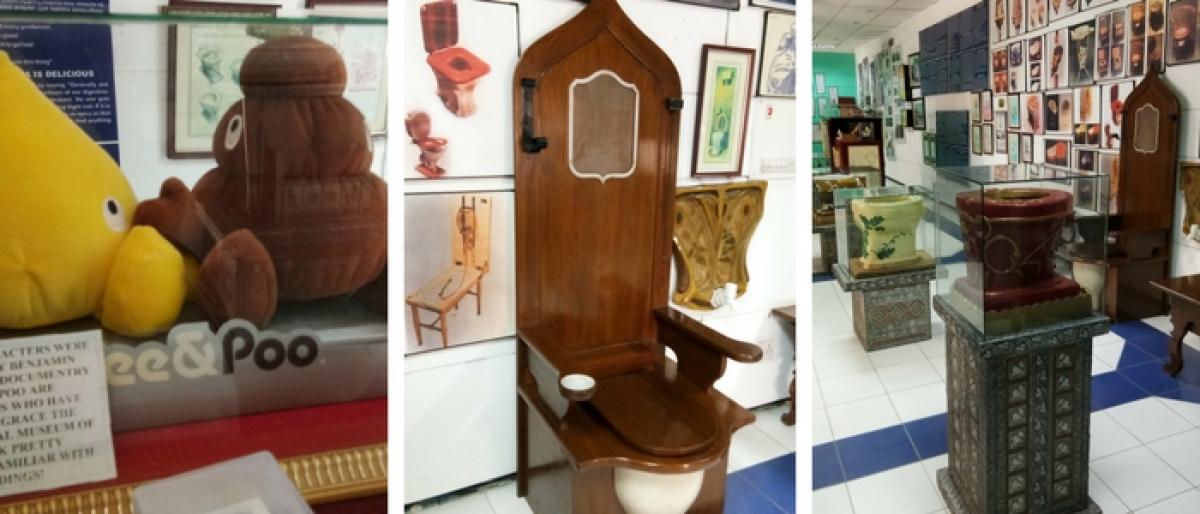Live
- Living to Dance
- MyVoice: Views of our readers 17th November 2024
- Congress dares Kishan to bathe in Musi
- Kishan launches Musi Nidra programme
- ‘Yuva Utsav-2024’ commences
- Fire safety drill held at Secretariat
- Meru Srujan 2024: A Spectacular Celebration of Talent and Culture
- Representatives of VIDASAM demand resignation of YSRCP MLAs
- Police grill BRS leader Jaipal Yadav
- Revanth sells 6Gs to woo voters in Maharashtra
Just In

Full of strange facts and objects, our museums and history books carry some very interesting stories from bygone times. But one peculiar piece that doesn\'t find space anywhere is about a French monarch\'s struggle with constipation that led him to have a commode built under his throne.
International Museum of Toilets at New Delhi traces 4,500-year history of toilets
Full of strange facts and objects, our museums and history books carry some very interesting stories from bygone times. But one peculiar piece that doesn't find space anywhere is about a French monarch's struggle with constipation that led him to have a commode built under his throne.
Height of glory for toilets was reached when King Louis XIV gave audience while using it, prompting his court jester to remark that he found it a bit strange that while the king preferred to eat in privacy, he chose to ease himself in public.
The replica of his throne is on display at the Sulabh International Museum of Toilets, in the Dwarka area of west Delhi, which traces 4,500 years of history of toilets.
Sulabh has an amazing collection of intriguing facts, pictures and objects detailing the evolution of sanitation from 2,500 BC to date.
The very fact that there is a museum that displays types of toilet seats – from wooden to ornamental, from electric to floral, may come as a surprise to many.
Sulabh was established by social reformer Bindeshwar Pathak with the help of curators like Frittz Lischka from Austria and 80 to 90 other professionals around the world.
The existence of toilet facilities has a long history, possibly older than that of the Roman mpire. Sanitation has been the index of civilisation and the museum artefacts are displayed chronologically to map the developments beginning from the Indus Valley Civilisation during the third millennium BC progressing on to the latest developments till the end of the 20th century.
Tracing the history of the evolution of toilets seems a bit ironical in India, where, even today, many people defecate in the open, often near railway tracks. But India was one of the pioneers in this field.
Excavations at Mohenjo-Daro confirm the existence of common baths and private toilets in households. The exhibition room displays write-ups on and drawings and replicas of toilets and sanitation practices from ancient Egypt, Babylonia, Greece, Jerusalem, Crete and Rome.
According to the literature published by the museum, there was a lot of jest and humour relating to toilet habits and toilet appurtenances.
Britain in ancient times created fantasies in stoneware toilets and bath. A replica of the medieval mobile commodes in the shape of a treasure chest, which the English used while camping out for a hunt, also finds space at the museum.

© 2024 Hyderabad Media House Limited/The Hans India. All rights reserved. Powered by hocalwire.com







